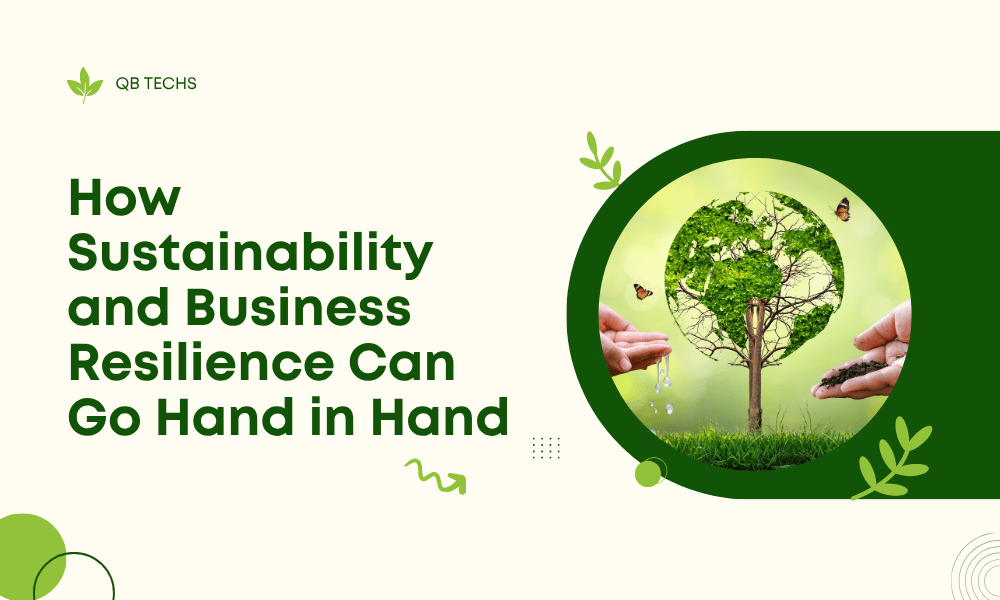There’s rarely a moment of calm when you’re running a business now. The intense competition, financial pressure, and the need to keep pace with rapid technological changes truly make it feel like you’re caught in a storm.
And just when you think you’ve found your footing, new regulations roll in. The Corporate Sustainability Reporting Directive (CSRD) requires companies to disclose information about the sustainability aspects of their operations.
So, running a business is no longer about turning a profit. It’s about proving you’re building a business that can weather disruption and contribute to a healthier planet.
How do you build a business that not only survives, but also thrives in the face of all this change, then? The answer lies in sustainability.
Here are a few practical sustainability practices your business can adopt to boost resilience and stay ahead, no matter what comes next.
#1 Rethink Product Source Materials
For a long time, when businesses thought about where their products came from, the main focus was getting the cheapest materials possible. But now, that narrow focus can actually make your business more vulnerable.
You might not know, but a significant portion of most companies’ environmental footprint stems outside their direct operations. That is, in the materials they buy, the transport they use, and the practices of their suppliers.
To make your supply chain sustainable, think local whenever possible. Sourcing materials closer to home can significantly cut down on transportation emissions. Plus, it’s a great way to support your local economy and build stronger community ties.
Then there’s the option of using recycled and upcycled materials. This not only helps to reduce waste and conserve precious natural resources, but can also add a unique and appealing story to your products.
#2 Use Recyclable and Innovative Packaging
Where does the packaging of your product end up? Landfills, of course. This contributes to pollution.
However, packaging isn’t the problem; the kind that you’re using is. Those that are made of PVC (polyvinyl chloride), polystyrene (PS), and black plastics are problematic. These are not easily recyclable and take a very long time to decompose.
Switching to recyclable and innovative packaging solutions can help you reduce your business’ environmental footprint as well as strengthen your resilience.
Consumers, especially young people, are willing to open their wallets to brands that prioritize it. A survey reveals that 54% of people aged 18 to 34 admitted to choosing products with sustainable packaging.
Think about the different options available. You’ve got your classic recyclable materials like paper, cardboard, and certain types of plastics and metals.
Plant-based plastics, like Coca-Cola’s PlantBottle, are also gaining traction as a more sustainable alternative.
Another trend to watch is reusable and refillable packaging models, where customers can return packaging to be cleaned and reused. This not only cuts down on waste, but also creates a unique customer experience.
#3 Employ Green Shipping Methods
The way you ship products has a significant impact on the environment.
In 2020, a whopping 37% of all greenhouse gas emissions came from shipping products around and dealing with returns.
One of the simplest ways to make your shipping greener is to optimize your delivery routes and consolidate shipments whenever possible.
Opting for ground-based shipping over air freight can make a big difference in your carbon footprint.
Have your own fleet? Look into alternative fuels, then. Hydrogen is an example. Due to its fast refueling capabilities, high energy density, and ability to significantly reduce emissions, it can decarbonize the transportation sector.
The challenges around hydrogen storage are also being solved. A safe, low-cost, and scalable hydrogen storage technology based on novel reticular materials like MOFs is offering a way forward.
MOF stands for metal-organic frameworks. These are nano-engineered porous materials that are specifically designed to attract hydrogen molecules into their nanoscale pores.
According to H2MOF, this solid-state technology is less energy intensive and is ultimately cheaper compared to conventional hydrogen storage methods like compression and cryogenic cooling.
#4 Use Green Web Hosting
This one surprises a lot of people, but yes, your website has a carbon footprint.
The internet is a huge energy consumer. Data centers run 24/7, and many still rely on fossil fuels. So, if your website is hosted on a traditional server, it could be leaving a bigger carbon footprint than you realize.
Green web hosting is a simple but often overlooked fix. Many green web hosting providers power their data centers with renewable energy sources like solar, wind, and hydroelectric power. Others invest in energy-efficient hardware and cooling systems to reduce their overall energy consumption.
Some providers even purchase renewable energy certificates (RECs) or carbon offsets to compensate for the energy they use.
Opting for a green web host allows your business to substantially shrink its digital carbon footprint and support a greener internet.
Adopting these four sustainability practices will not just lower your carbon footprint and make you environmentally responsible. But they will also make your business more resilient.
So, think long-term and adopt these sustainable methods. You will create a stronger, more resilient, and ultimately more successful business that also plays a part in creating a healthier planet.



Leave A Comment
You must be logged in to post a comment.